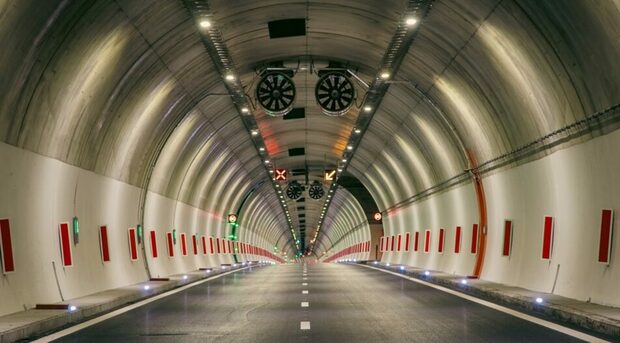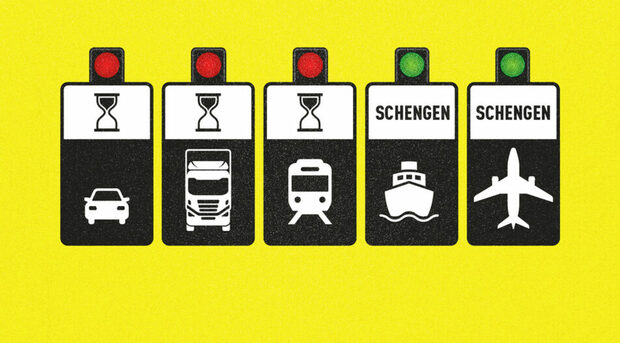In 2019, Bulgaria's economy grew by a nominal rate of 9% (3.7% in real terms) to 119.8 billion levs (61.3 billion euro). A little over 40% of the econoimic output was produced in the capital, where services in sectors like ICT and outsourcing have been driving a surge in value-added (and living standards) for years. This is visible from the latest figures for the regional GDP out last week. While they speak of a past long gone (2019 seems so far away now), it is a useful picture to keep in mind for the post-pandemic future, because some of the trends are surely going to continue.
Sofia's economy is more than five times the size of the second-largest region of Plovdiv - the manufacturing hub in central southern Bulgaria, where GDP grew by a nominal rate of 10% in 2019 to a total of 9.7 billion levs. Varna, Bulgaria's largest city on the Black Sea coast, where tourism, construction, and trade dominate, trails Plovdiv with an output of 7.7 billion levs in 2019.
On the other side of the scale are Bulgaria's smallest regional economies - the northwesternmost province of Vidin, where GDP topped 700 million levs in 2019, and agriculture-heavy Silistra at the northeastern corner with 835 million levs in output.
Gains and losses
At some point in the past, Sofia used to lag behind Plovdiv and other cities in terms of growth - the capital was too big and heavy, while some smaller economic regions were booming.
In 2019 though, Sofia took the lead in regional rankings with a pretty impressive GDP per capita growth rate of 15% year-on-year. Other provinces also achieved double-digit growth. Southern Bulgaria's Kardzhali province is a surprising newcomer - GDP per capita grew there by an annualized rate of 13.4%. Kardzhali, with its large ethnic Turk population, is an interesting case study for the transformation of a region's economy. In the past decade, agriculture shrank by more than a third while industry more than doubled. The biggest investor in the region since 2008 has been Turkish auto parts manufacturer Teklas, which already has six factories there, 456 million levs in revenues, and over 2,500 employees in 2019.
Plovdiv, Smolyan, Pleven, and (another surprise) Vidin's growth rate in GDP per capita also topped 10% year-on-year. Pleven region, bordering the Danube river, is also an interesting case study of a stirring industrial sector. The arrival of German auto parts manufacturers Leoni and VOSS Automotive in the area, as well as the capacity expansion of food manufacturer Boni Holding and French malt producer Malteries Soufflet, are just some of the most recent examples.
Other regions, however, did not have a good year. Pleven's neighbor Vratsa reported a decline in GDP of 13.2% compared to 2018. The decrease comes entirely from the industrial sector, where the largest enterprise is Kozloduy Nuclear Power Plant, which employs about 4,500 people directly and indirectly (through repair and maintenance enterprise Atomenergoremont).
Industry is also the reason behind another energy hub decline - Stara Zagora's GDP shrank by 6.6% in 2019. The south-central region depends heavily on the energy sector - there are two American-owned thermal power plants (TPPs), the state-owned TPPs Maritsa Iztok 2 and Brikel, as well as the biggest coal mining company in the country - Mini Maritsa Iztok. But manufacturing is thriving with national leaders in sectors like mechanical engineering, food processing, and electronics.
Trends from the regions
Unsurprisingly, investment means growth, and vice versa. Money is flowing mainly into the leading economic centers in the country, but in recent years an influx has been visible in smaller regions. "Industrial investments in areas such as Shumen and Targovishte in the northeast, or Kardzhali and Haskovo in the south, as well as the entry of digital companies in areas such as Ruse and Veliko Tarnovo have increased investment activity beyond the major centers," wrote Sofia-based Institute for Market Economics (IME).
The data-heavy annual report Regional Profiles of IME takes a close look at regional trends in economic development, demography, taxes, culture, crime, education, and healthcare. It concludes that over 70% of foreign direct investment (FDI) (aggregated) and over 60% of capital expenditure for non-financial entities are concentrated in four cities - Sofia, Plovdiv, Varna and Burgas. Gabrovo, Stara Zagora and the region around the capital - Sofia area, are also in the top 7.
The COVID effect
Of course, last year was a whole lot different. The numbers are not out yet but we can predict no region will remain unscathed from the economic fallout of the coronavirus pandemic.
Bulgaria as a whole reported an unemployment rate of less than 5% at the end of 2019, but here too there are big differences - while Sofia, Plovdiv, and Varna reported unemployment of about 2-3%, in the northwest the figure reached 20%. This divide surely grew bigger in 2020.
"In 2020, we see very clearly how, at the moment when restrictive measures of any kind are introduced, there is an immediate flow to the labor offices," said Adrian Nikolov of the IME. "Once they are released, the labor market is reactivated very quickly, people are reorienting to new jobs," he added.
According to economists at the institute, the fastest-growing regions took the brunt of the impact of the crisis. However, their dynamic labor markets are also the reason why they would be the first to bounce back when the economy starts to recover. And the recovery process already seems to be underway.
Unemployment in Bulgaria has been going down since the fall, and by December 2020 most municipalities reported an increase in unemployment by only 2 percentage points compared to levels in December 2019, according to IME data.
The disparities
Despite the strong gains many regions experienced in recent years, economic gaps are widening. In 2019, the leader in terms of economic development - Sofia, with its 38,600 levs (19,700 euro) in GDP per capita has an advantage of 127% over its closest competitor - the surrounding Sofia region (17,000 levs), and over 135 % ahead of Varna and Stara Zagora, each with an output per capita of around 16,300 levs.
This is the largest gap since these indicators became available (2000), with the exception of the last crisis year - 2010, when the difference was 137%. For comparison, in 2018 the capital was ahead of the runner-up - then Stara Zagora, with 94% higher GDP per capita. The gap between Sofia and the last regions in the ranking topped 400% in 2019.
In 2019, Bulgaria's economy grew by a nominal rate of 9% (3.7% in real terms) to 119.8 billion levs (61.3 billion euro). A little over 40% of the econoimic output was produced in the capital, where services in sectors like ICT and outsourcing have been driving a surge in value-added (and living standards) for years. This is visible from the latest figures for the regional GDP out last week. While they speak of a past long gone (2019 seems so far away now), it is a useful picture to keep in mind for the post-pandemic future, because some of the trends are surely going to continue.
Sofia's economy is more than five times the size of the second-largest region of Plovdiv - the manufacturing hub in central southern Bulgaria, where GDP grew by a nominal rate of 10% in 2019 to a total of 9.7 billion levs. Varna, Bulgaria's largest city on the Black Sea coast, where tourism, construction, and trade dominate, trails Plovdiv with an output of 7.7 billion levs in 2019.












